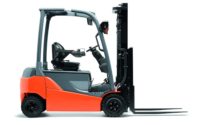Innovation Changing the Face of Electric Motors
Electric motors are ubiquitous, providing mechanical energy to every electronic item that makes our lives easier. While electric motors are being used for decades now, there is still room for improvement in terms of technology and efficiency in order to conserve energy.
From refrigerators to computer hard drives, vacuum cleaners to automatic car windows, a plethora of appliances and devices utilize electric motors for transforming electrical energy into mechanical energy through the electromagnetism process. Basically, electric motors impact almost every aspect of modern living, making up for a very large portion of industrial processes to manufacture every conceivable product. Unlike engines that run on fossil fuels, electric motors contribute to a safe and comfortable working environment, emitting little or no noise with a quiet start and stop system. The simplicity and efficiency of the design makes it ideal for application where fine excellent speed precision and control are required.
Technological Advancements in Electric Motor Technology
Multi-Wire Method Improving Work Efficiency
The multi-wire method newly introduced in the electric motors eliminates any kind of obstruction in the electric current during the transformation of energy. The obstruction usually occurs due to the accumulation of too many electrons flowing in the electric motor on the external part of the wire. The innovative multi-wire method reduces the obstruction of electrons and heat and thus produces energy more efficiently. The multi-wire method, also known as the Potential Electro Motion Force (PEMF) method, uses 80% of electrical energy to generate movement along with reducing the energy cost. Increasing density of electronic motor with multi-wire method decreases 90% heat and increases torque up to 1200%. Besides, the PEMF method decreases the energy input consumption, maintains the availability of energy source, and increases the profit of electric power providers.
- Switched Reluctance Motor for Low Resistance
Powered with computing capabilities, brushless DC switched reluctance motor allows viable commercial implementation. SRM offers clear advantages over conventional motors such as it can operate with one of its phases missing, an instant stop mode for induction motor systems, etc. In SRM, only the copper wire is used rather than employing other alternatives such as aluminum to wind the electric motors for much lower electrical resistance and heat. Besides, SRM improves energy efficiency and reduces the operating temperature of motors, thereby diminishing the skin effect, a phenomenon that increases the resistance of the conductor. Moreover, SRMs provide high power density, reliability, and exceptional constant-power speed range capability.
- Trapezoidal Stator Radial Flux (TSRF) for Light-Weight Motors
A new and innovative technology, called Trapezoidal Stator Radial Flux introduced by an Israeli start-up EVR Motors reduces the size and weight of the existing radial flux permanent magnet (RFPM) motors to half, making it lighter and efficient. Besides, the TSRF technology enables superior power and torque density while reducing the overall production cost. The motor can find its application from two-wheelers to cars and trucks, battery electric vehicles to hybrid electric vehicles as it supports a wide range of torque outputs and voltage ranging from 48V to 800V.
Electric Motors Shaping the Future of Mobility
When it comes to electric cars, batteries are the first thing that everyone takes into consideration. But, what about the electric motor that runs the car? Although electric motor gets a little recognition, the technology has a profound effect on the performance of new-age automobiles. With new technologies like 3D printing, in-wheel motors, etc., making an entry into the automobile space, electric cars could grab more limelight. Most electric motors have a basic set-up, tightly wound coils of wire interacting with powerful magnets to create rotation. The power of the motor is directly proportional to the speed of the car. But, increasing the speed also means generating more heat, which could boost the performance of electric motors. However, there is room for improvement in the electric motors to enhance their efficiency without overheating.
Equipmake, a U.K. based electric motor manufacturer and electrification specialist has a solution to combat the overheating issue, rearranging the motor’s magnets so that they are positioned like the spokes of the wheel. This advancement would increase torque and make magnets more accessible for running cool water over them to combat heat production.
The company also plans to use additive manufacturing that can increase the surface area inside the motor for cooling surfaces and thus achieve much greater cooling potential. Besides, with additive manufacturing, one can integrate multiple components in order to reduce the component count.
Equipmake has signed a deal with Brazilian automotive manufacturer Agrale for the use of their advanced electric motors in supercars and electric buses. The improved electric motor can enhance the efficiency of vehicles in a way that they can run all day on a single charge.
Another nagging issue with electric motors in most cars and trucks is that they require a reduction gear to utilize and multiply torque. Reduction gears add weight and cost to a certain extent while adding more complexity and bit of efficiency loss. Eliminating reduction gears could lead to fewer parts, reduced costs, better reliability, and more performance for EV manufacturers.
Linear Labs, a Texas-based company, has developed a next-generation motor technology called Hunstable Electric Turbine (HET) that could increase torque without requiring reduction gear. The secret sauce behind the new development in electric torque is the magnetic torque tunnel. HET is a 3D Circumferential Flux Motor, capable of producing torque in electric motors two to three times greater than similar-sized competing motors. The electric motor consists of four rotors and a magnetic structure within the motor case. The HET motor is highly scalable and simplifies the flow of energy generation while saving weight and cutting costs.
How Could Electric Motors Lead to Sustainability?
Electric motors contribute to 40% of total electricity consumption across the world, with industries accounting for the largest share. Energy consumption is expected to grow significantly by the year 2030, which could impact the environment. The design of the electric motor has a direct correlation with the amount of energy it consumes. According to several studies, electric motors can make up about 45% of the total consumption of electric energy. Therefore, European Union, United States, China and other countries are enforcing regulatory plans to use forefront drive technologies instead of obsolete ones to enhance energy efficiency requisites.
Recently, the United States based start-up Turntide has launched its energy-efficient electric motor to shave the global warming edge off the building. Building electrification is the key to accelerate decarbonization. The smart motor system launched by Turntide is the first revolution in motor technology, designed around the principles that govern switched reluctance motor technology. The company claims to have made the most efficient, reliable, and intelligent motor that combines cutting-edge technologies to provide intelligent controls. The company’s cloud-based software platform makes SRMs more controllable, allowing them to run at greater efficiency. American business magnate Bill Gates and Amazon have provided net funding of USD80 million for Turntide electric motor venture to meet the growing demand for energy-efficient appliances. Besides providing greater efficiency, Turntide’s technology eliminates the requirement for rare-earth metals in motor manufacturing.
Conclusion
The rising trend of highly efficient, smart, and sustainable electronic motors could reduce carbon emissions significantly and facilitate the growing demand for energy. In the coming years, smart motors would become mainstream, replacing the conventional motors that consume a lot of energy and don’t last long.
According to TechSci research report on “Global Electric Motor Market By Type (AC Motors, DC Motors and Hermetic Motors), By End Use (Residential, Commercial, Industrial, Transportation and Others), By Output Power (Above 1HP and Upto 1HP), By Region, Competition Forecast & Opportunities, 2016-2026”, the global electronic motor market is anticipated to grow at a CAGR of over 6.28% by 2026, owing to the increasing global electricity demand across various sectors such as automobiles, railways, green buildings, etc. Besides, rising government initiatives and growing investments from industry leaders are fuelling the growth of global electric motor market.
According to another TechSci Research report on “India Electric Motors Market By Type, By Voltage Rating, By End Use, By Application, By Region, Competition, Forecast & Opportunities, 2014 – 2024”, India electric motors market is expected to surpass USD2.08 billion by 2024, owing to the growing government focus on adoption of energy efficient motors and increasing urbanization and industrialization activities. Besides, various government initiatives such as affordable housing, smart city mission, etc. are positively influencing the growth of India electric motors market.



